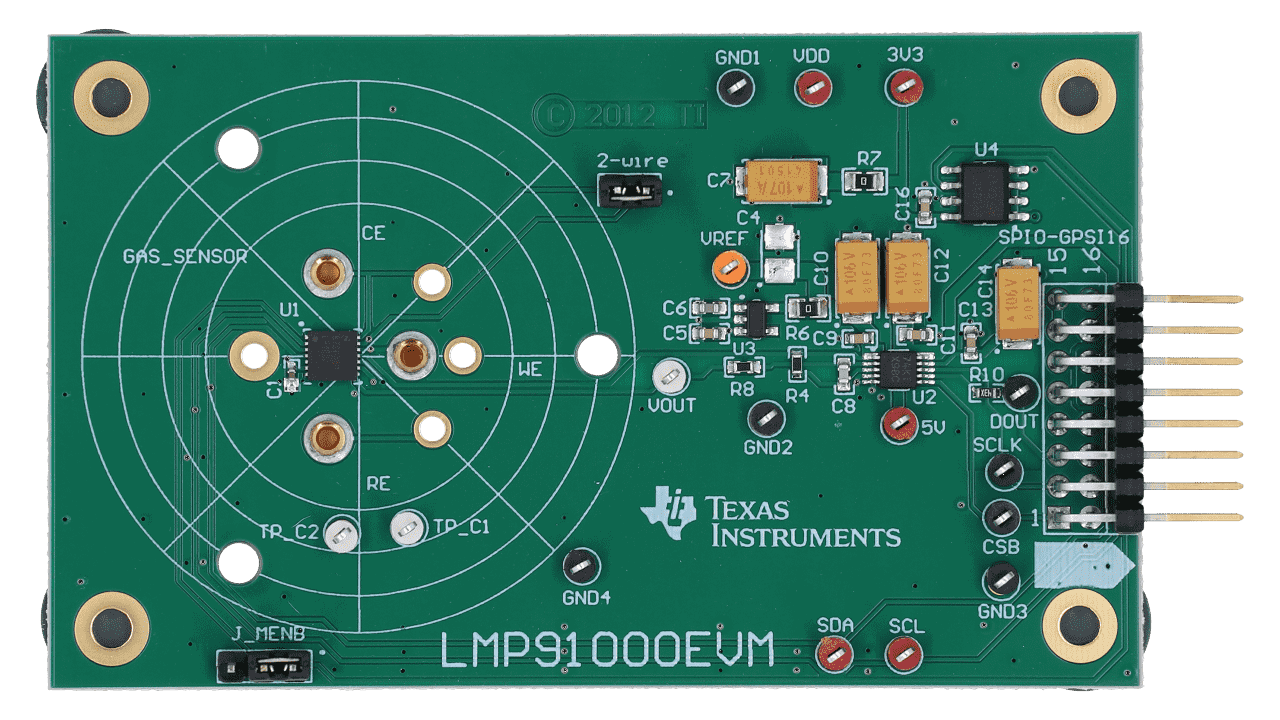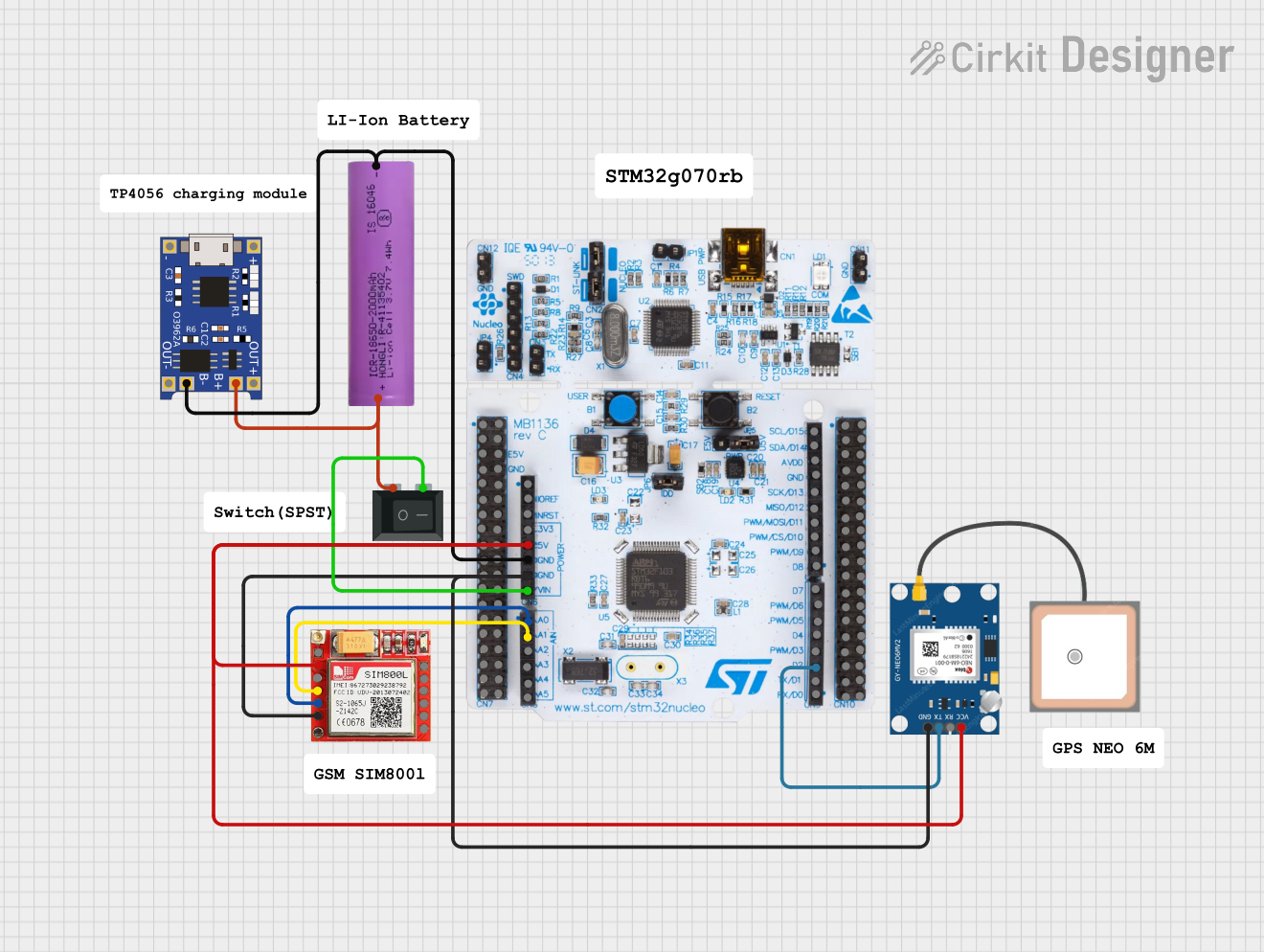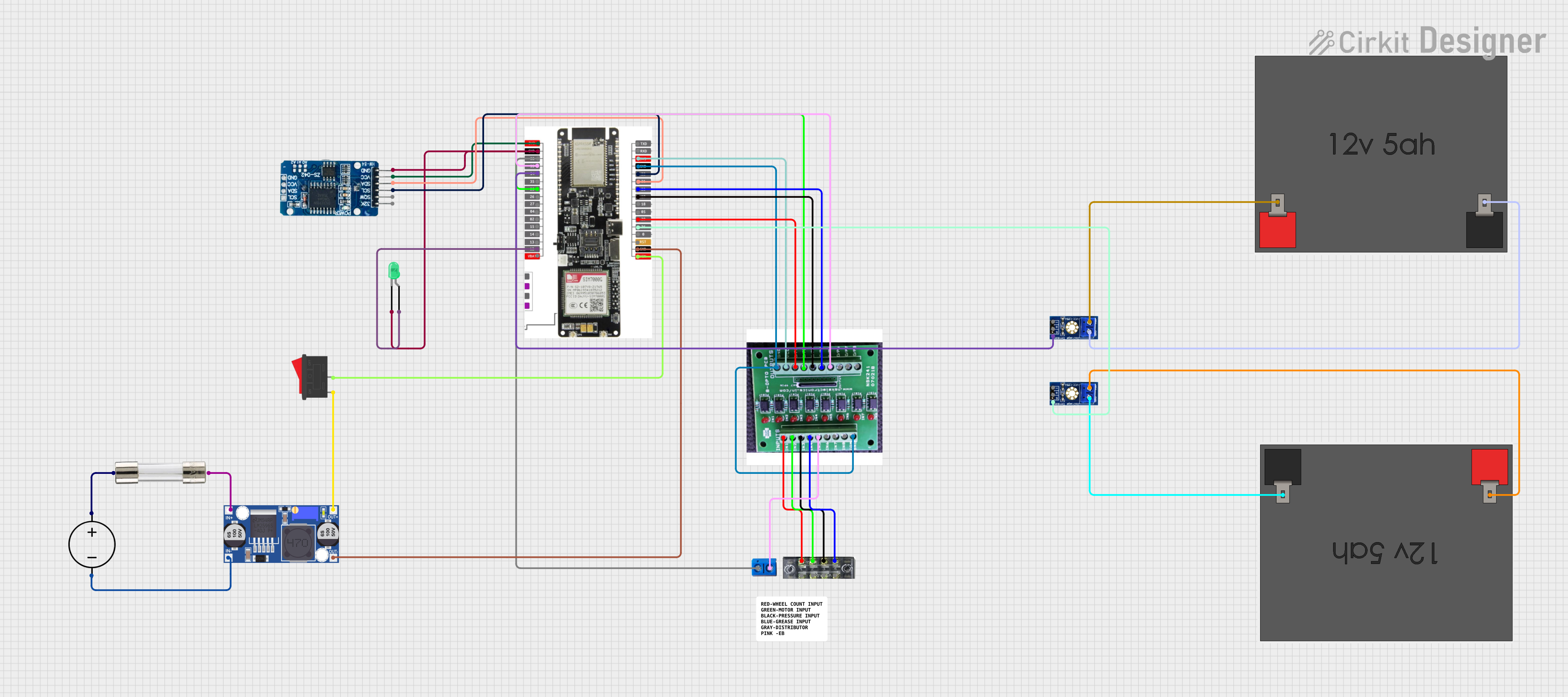
How to Use LMP91000: Examples, Pinouts, and Specs

 Design with LMP91000 in Cirkit Designer
Design with LMP91000 in Cirkit DesignerIntroduction
The LMP91000 is a low-power, high-performance potentiostat designed by Texas Instruments for use in electrochemical sensor applications. It integrates a programmable gain amplifier (PGA), a reference voltage output, and configurable bias settings, making it highly versatile for interfacing with a wide range of electrochemical sensors, such as gas sensors, pH sensors, and amperometric sensors.
Explore Projects Built with LMP91000

 Open Project in Cirkit Designer
Open Project in Cirkit Designer
 Open Project in Cirkit Designer
Open Project in Cirkit Designer
 Open Project in Cirkit Designer
Open Project in Cirkit Designer
 Open Project in Cirkit Designer
Open Project in Cirkit DesignerExplore Projects Built with LMP91000

 Open Project in Cirkit Designer
Open Project in Cirkit Designer
 Open Project in Cirkit Designer
Open Project in Cirkit Designer
 Open Project in Cirkit Designer
Open Project in Cirkit Designer
 Open Project in Cirkit Designer
Open Project in Cirkit DesignerCommon Applications and Use Cases
- Environmental monitoring (e.g., gas detection, air quality sensors)
- Medical diagnostics (e.g., blood glucose monitoring, lactate sensors)
- Industrial process control (e.g., chemical analysis, corrosion monitoring)
- Research and development in electrochemical sensing
The LMP91000 is particularly valued for its low power consumption, making it suitable for portable and battery-powered devices.
Technical Specifications
Key Technical Details
| Parameter | Value |
|---|---|
| Supply Voltage (VDD) | 2.7V to 5.25V |
| Operating Current | 10 µA (typical) |
| Temperature Range | -40°C to +85°C |
| Programmable Gain Amplifier | 2.75 kΩ to 350 kΩ |
| Reference Voltage Output | Programmable (20% to 80% of VDD) |
| Sensor Bias Voltage | Programmable (-24% to +24% of VDD) |
| Communication Interface | I²C |
| Package Type | WSON-14 (4mm x 4mm) |
Pin Configuration and Descriptions
The LMP91000 is available in a 14-pin WSON package. Below is the pinout and description:
| Pin Number | Pin Name | Description |
|---|---|---|
| 1 | VDD | Power supply input (2.7V to 5.25V). |
| 2 | VREF | Reference voltage output for the sensor. |
| 3 | C1 | External capacitor connection for internal filtering. |
| 4 | C2 | External capacitor connection for internal filtering. |
| 5 | VOUT | Output voltage from the potentiostat circuit. |
| 6 | TIA OUT | Transimpedance amplifier output. |
| 7 | CE | Counter electrode connection for the electrochemical sensor. |
| 8 | RE | Reference electrode connection for the electrochemical sensor. |
| 9 | WE | Working electrode connection for the electrochemical sensor. |
| 10 | GND | Ground connection. |
| 11 | SDA | I²C data line for communication. |
| 12 | SCL | I²C clock line for communication. |
| 13 | ADDR | I²C address selection pin. |
| 14 | NC | No connection (leave unconnected). |
Usage Instructions
How to Use the LMP91000 in a Circuit
- Power Supply: Connect the VDD pin to a regulated power supply (2.7V to 5.25V) and GND to the ground.
- Sensor Connections:
- Connect the CE, RE, and WE pins to the counter, reference, and working electrodes of the electrochemical sensor, respectively.
- Reference Voltage: Use the VREF pin to provide a stable reference voltage to the sensor. This voltage can be programmed via the I²C interface.
- External Capacitors: Connect capacitors to the C1 and C2 pins as specified in the datasheet for proper filtering.
- I²C Communication: Use the SDA and SCL pins to communicate with the LMP91000 via an I²C master device (e.g., a microcontroller or Arduino).
Important Considerations and Best Practices
- Sensor Bias Configuration: Configure the sensor bias voltage and gain settings via the I²C interface to match the requirements of your specific sensor.
- Power Consumption: The LMP91000 is optimized for low power consumption, but ensure proper power management in battery-powered applications.
- PCB Layout: Minimize noise by placing decoupling capacitors close to the VDD and GND pins. Keep traces to the sensor electrodes as short as possible.
- Startup Sequence: Ensure the power supply is stable before initializing the I²C communication.
Example: Connecting the LMP91000 to an Arduino UNO
Below is an example of how to interface the LMP91000 with an Arduino UNO using I²C communication:
#include <Wire.h> // Include the Wire library for I²C communication
#define LMP91000_I2C_ADDR 0x48 // Default I²C address of the LMP91000
void setup() {
Wire.begin(); // Initialize I²C communication
Serial.begin(9600); // Initialize serial communication for debugging
// Configure the LMP91000
Wire.beginTransmission(LMP91000_I2C_ADDR);
Wire.write(0x10); // Write to the TIACN register (Transimpedance amplifier control)
Wire.write(0x03); // Set gain to 7kΩ and RLOAD to 10Ω
Wire.endTransmission();
Serial.println("LMP91000 configured successfully.");
}
void loop() {
// Example: Read a register from the LMP91000
Wire.beginTransmission(LMP91000_I2C_ADDR);
Wire.write(0x00); // Point to the STATUS register
Wire.endTransmission();
Wire.requestFrom(LMP91000_I2C_ADDR, 1); // Request 1 byte from the STATUS register
if (Wire.available()) {
byte status = Wire.read();
Serial.print("STATUS Register: 0x");
Serial.println(status, HEX);
}
delay(1000); // Wait for 1 second before the next read
}
Troubleshooting and FAQs
Common Issues and Solutions
No Output from the Sensor:
- Ensure the sensor is properly connected to the CE, RE, and WE pins.
- Verify that the sensor bias voltage and gain settings are correctly configured via I²C.
I²C Communication Fails:
- Check the connections to the SDA and SCL pins.
- Ensure pull-up resistors (typically 4.7kΩ) are connected to the SDA and SCL lines.
- Verify the I²C address of the LMP91000 (default is 0x48).
High Noise in Output:
- Ensure proper decoupling capacitors are placed near the VDD and GND pins.
- Minimize the length of traces connecting the sensor electrodes to the LMP91000.
Incorrect Reference Voltage:
- Verify the VREF configuration via I²C.
- Ensure the power supply voltage (VDD) is stable and within the specified range.
FAQs
Q: Can the LMP91000 be used with a 3.3V microcontroller?
A: Yes, the LMP91000 operates with a supply voltage as low as 2.7V, making it compatible with 3.3V systems.
Q: What types of sensors are compatible with the LMP91000?
A: The LMP91000 supports a wide range of electrochemical sensors, including amperometric, potentiometric, and voltammetric sensors.
Q: How do I change the I²C address of the LMP91000?
A: The I²C address can be modified by configuring the ADDR pin. Refer to the datasheet for specific address selection options.
This documentation provides a comprehensive guide to understanding, using, and troubleshooting the LMP91000 potentiostat. For further details, refer to the official Texas Instruments datasheet.